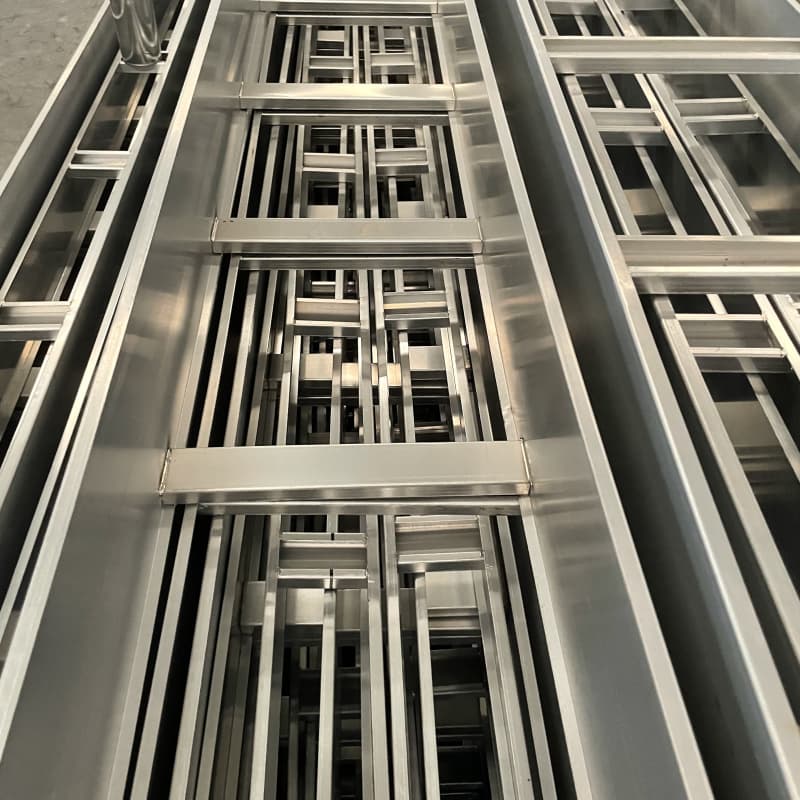What are the requirements for installing aluminum alloy cable trays?
There are various types of aluminum alloy cable trays, such as stainless steel, aluminum alloy, ladder, mesh, etc., which are commonly used and composed of brackets, brackets, and installation accessories. It can be used independently and can also be connected to various engineering buildings (structures) and water pipe supports, with the characteristics of simple construction, beautiful and generous appearance design, convenient equipment, and easy maintenance.
1.In engineering design, cable trays should be comprehensively considered based on factors such as economic rationalization, feasibility of technical application, and stable operation. Subsequently, a clear plan should be formulated, which should also meet the requirements for installation, maintenance, and cable placement.
2. The height of horizontally laid cable trays from the road surface is generally not less than 2.5 meters, and protective metal covers should be added below 1.8 meters from the road surface vertically, except in electrical equipment dedicated rooms. Aluminum alloy cable trays laid in equipment interlayers or roads should be less than 2.5 meters and require grounding protection measures.
3.When using cable trays, trunking, and their supports and hangers in corrosive and irritating environments. Anti corrosion treatment should be adopted, which should meet the requirements of the engineering area environment and durability. Aluminum alloy cable trays should be selected for corrosion resistance regulations or clean locations.
4. Within the scope of fire prevention regulations, fire-resistant or flame-retardant materials such as boards and nets should be added to cable ladders and trays to form enclosed or semi enclosed structures, and measures such as spraying fire-resistant coatings on the surface of cable trays and supports should be taken. The overall fire resistance function should meet the requirements of relevant laws, regulations, norms or standards. Aluminum alloy cable trays should not be used in locations with high fire resistance requirements.
5. Non porous aluminum alloy cable trays should be selected for shielding electromagnetic interference from cable lines or for external protection against outdoor sunlight, oil, corrosive and irritating liquids, flammable dust and other environmental regulations.




